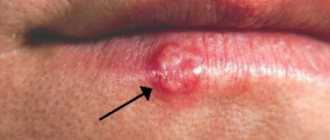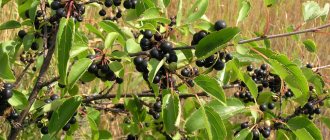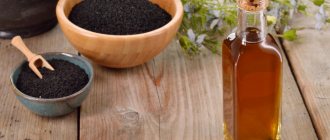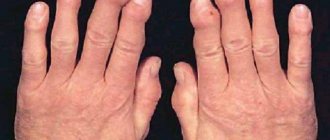Hyssop is a beautiful, unpretentious plant often used for decorative purposes. It can be seen in picturesque corners of personal plots, as well as as a hedge in gardens or on alpine hills. Some connoisseurs plant such a plant in flower pots at home. And no wonder! After all, not only does this plant have rare beauty, its exquisite aroma is mesmerizing. Thanks to him, it is highly valued in cooking as a spicy spice for seasoning various dishes. In addition, medicinal hyssop has valuable and beneficial qualities, due to which it is widely used in folk medicine.
Description of hyssop
Hyssop officinalis is a perennial herbaceous plant, woody at the base, or a subshrub, up to 20-80 cm high with a woody tap root. The stem of hyssop is erect, branched, tetrahedral, covered with short hairs or almost bare. The leaves are opposite, short-petioled, almost sessile, lanceolate or linear-lanceolate, entire, with edges slightly curved to the underside, hard, dark green, 1-5 cm long, 1-10 mm wide, the apical leaves are smaller. Hyssop flowers are irregular, small, fragrant, collected in groups of 3-7 in the axils of the upper leaves, arranged in one-sided half-whorls, forming oblong, discontinuous-spike-shaped apical inflorescences; the calyx consists of 5 cloves; corolla two-lipped, blue, lilac, blue-violet, sometimes pink or almost white, about 1 cm long, 4 stamens. Hyssop fruit - breaks up into four triangular, dark brown, oblong-ovate nuts, up to 2.5 mm long; 1 g contains 900-1000 pieces. Blooms in June-September. The fruits ripen in August-September; The seeds do not ripen at the same time and fall off easily. Propagated by seeds, dividing bushes, and stem cuttings. The entire plant is highly aromatic.
Kinds
There are few varieties of hyssop, only 3, among which the following are distinguished:
- Narrow-leaved or medicinal hyssop . This type of plant is used to make teas, decoctions and various infusions. The flowers of the plant are collected in small inflorescences, 8-10 in total. Harvesting begins from the moment the first buds open, throughout the entire summer period, until the end of flowering. For medicinal hyssop, only the upper part of the stems is cut off, capturing the flowers themselves and part of the leaves. It is a perennial plant and can live quietly without replanting for up to 10 years.
- Chalk hyssop . It acquired this name because of its love for the soil, where a significant content of chalk rock predominates. This species is very rare and is therefore listed in the Red Book. Unlike the others, it is less decorative and has a miniature size. The inflorescences are painted in a delicate blue color. The smell of the flowers itself is quite sharp with a predominant balsamic tint.
- Anise hyssop . Externally it is very beautiful, with a pleasant anise smell, which is where the name comes from. With a slight physical impact on the leaf, the smell of anise is significantly enhanced. Due to its unusual aroma, it is sometimes also called licorice mint. It differs from other species not only in smell, but also in external features. The stems are quite tall, and under favorable conditions they can grow up to 1 meter in height. The leaves of the plant are covered with purple spots. The flowers themselves have a beautiful rich blue color. The opening of the flowers occurs gradually, starting from the very bottom, maintaining a beautiful and spectacular appearance throughout the summer. In culinary art, you can use both delicate buds and open flowers. They are added to various salads, which gives dishes an exquisite spicy taste.
When growing together, different species are capable of cross-pollination; to avoid this, they should be planted at a distance from each other.
Habitat and ecology of hyssop
Comes from the hot regions of the Mediterranean, Central and Asia Minor. Distributed in the forest-steppe and steppe zones of the European part of the Russian Federation, in the Crimea, the Caucasus, Altai, Southern and Central Europe, India, and grown in the Baltic states. Loves light, rocky, calcareous, moderately moist soil and plenty of sun, grows on dry hills. Cultivated as a medicinal and ornamental plant.
Medicinal raw material hyssop
Hyssop herb - flowering, leafy tops - herba Hyssopi, young leaves, root, essential oil. The leafy flowering tops of the plant, up to 20 cm long, are collected at the beginning of flowering. They are dried in the shade, spread out in a thin layer or hung in bunches under canopies, in the attic at a temperature not exceeding 35 ° C, as they easily lose essential oil. The yield of dry raw materials is up to 20%. The smell is pleasant, sweet, reminiscent of turpentine and camphor, ginger-sage. The taste is pungent, tart, spicy, bitter. Raw materials are stored in closed containers or paper bags. The roots are harvested in the fall after wilting.
Summing up
Medicinal hyssop is a very beautiful and healthy herb with a tart, bitter taste and exquisite spicy aroma. Thanks to these properties, this plant has found wide use in the culinary and perfume industries. And thanks to its valuable and useful composition, it is often used for medicinal and cosmetic purposes. However, like all other medicines, hyssop is not useful for everyone and in some cases can be harmful to health. Therefore, before using it as a medicine, you should discuss it with your doctor.
More fresh and relevant information about health on our Telegram channel. Subscribe: https://t.me/foodandhealthru
We will be grateful if you use the buttons:
Chemical composition of hyssop
Hyssop raw materials contain: essential oil: terpenes (l-pinecamphon, l-pinecampheol, pinecampheol acetate, alpha-, beta-pinene, camphene, cineole, limonene), sesquiterpenes, in flowering grass - up to 1%, leaves and inflorescences - up to 2% ; the largest amount of essential oil is found in plants with dark flowers; diterpene marubin, rosmarinic acid, flavonoids (issopine, diosmin, hesperidin), hisopine beta-sitosterol, triterpenes (ursolic and oleanoic acids), phytoncides, 8% tannins, resins, gum, bitterness, pigments, sugars, ascorbic acid (up to 170 mg per 100 g of fresh leaves).
Use in cosmetology
Hyssop is widely used in cosmetology. Its oil components, extracts and extracts are contained in shampoos and creams, and are used in the production of lotions and tonics. Made at home or to order, decoctions and infusions of hyssop are suitable for treating skin with acne, vascular patterns, and dermatitis of varying degrees of complexity.
With regular use, it can improve complexion, reduce the appearance of small facial wrinkles, and accelerate regeneration in case of minor damage.
Action and use of hyssop
In terms of its healing effect, hyssop is similar to medicinal sage. It has an antiseptic, antispasmodic, anti-inflammatory, expectorant, astringent, diuretic, and tonic effect on the central nervous system. Used for inflammatory diseases of the upper respiratory tract, chronic bronchitis, bronchial asthma, profuse sweating, during menopause with hot flashes, neuroses, arterial hypotension, anemia, inflammation of the urinary tract, rheumatism, gastritis, enterocolitis, flatulence, constipation, promotes digestion, stimulates appetite, strengthens the stomach; externally - for resorption of subcutaneous hemorrhages, for dislocations, for rinsing with stomatitis, hoarseness, pharyngitis, laryngitis, sore throat, for washing the eyes with conjunctivitis, wounds and ulcers. A decoction of the herb along with wine berries is taken 1 teaspoon for coughing and chest pain. Hyssop herb is used in homeopathy.
Side effects
You can use other recipes that will most likely benefit you. But you should know that this very valuable medicinal plant also has side properties and contraindications.
- Hyssop officinalis has a stimulating effect on the heart muscle, it increases blood pressure while constricting blood vessels, so it should not be used by hypertensive patients.
- Another very significant drawback is that hyssop preparations can cause constipation, so they must be used in strictly dosed doses.
- Hyssop is often used in incense and incense. There are cases when inhaling the smoke of such mixtures causes allergies and even spasms, so people with a predisposition to allergens should refrain from such methods.
Hyssop Recipes
- For bronchitis: 100 g of flowers, 1000 ml of boiling water, 160 g of sugar - drink 100 ml per day.
- 10% infusion of the herb - 100-150 ml 3 times a day before meals for diseases of the bronchi, stomach, and intestines.
- Infusion for internal use: 2 teaspoons of herb per 1 glass of boiling water - daily dose.
- 2 teaspoons of chopped aerial parts are poured with 1 cup of boiling water; The cooled, strained infusion is drunk in equal portions throughout the day for 2-3 weeks when sweating.
- 2 teaspoons of raw material are infused in 2 glasses of hot water, take ½ glass 4 times a day.
- 1 teaspoon of finely chopped raw material is poured into 250 ml of boiling water, drunk warm ½ cup 3-4 times a day; can be used externally for rinsing, washing wounds, ulcers.
- 1-2 tablespoons of herb per 400 ml of boiling water, leave for 1 hour, strain - ½ cup 2-3 times a day 20 minutes before meals (drink warm).
- An infusion of 15 g of herb per 1 liter of water was used for jaundice, dropsy and urolithiasis.
- 20% tincture with 40% ethanol - 5 ml 3 times a day.
- 20 g of herb per 100-200 ml of vodka, infuse for 7 days, filter - 1 teaspoon 2-3 times a day.
- 20% tincture of fresh herbs in vegetable oil for microenemas and external use.
- Infusion for external use: 1 tablespoon per 1 glass of water.
- 2 teaspoons of herb per 200 ml of boiling water, leave for 30 minutes - for rinsing, washing, compresses.
- “Salerno Health Code”: “...the chest is cleansed of phlegm by an herb called hyssop. Hyssop is beneficial for the lungs if it is boiled with honey. And they say that it gives an excellent color to the face.”
Plant care
Growing and caring for fragrant hyssop includes loosening and weeding. Water the plant as needed, about 3-4 times during the summer. In autumn, the shoots must be pruned, leaving stems up to 15 cm high, giving the bush a hemispherical shape. Thanks to this, in the future the shoots will branch well and bloom profusely.
You can trim the shoots in the spring, which will lead to the formation of above-ground shoots from a node located at the base of the main shoot of the plant. Self-sowing is not expected; the inflorescences are cut off when the seeds turn brown and scattered on the surface, waiting for ripening. The plant is frost-resistant and can withstand drought. A sunny, damp corner of the garden is favorable for fragrant grass. The grass is unpretentious to the soil, but grows better on loose, drained soil with a slightly alkaline and neutral environment. Seeds do not lose their viability for 3-4 years.
Cooking with hyssop
Fresh young and dry shoots and leaves, as well as hyssop roots, are used as a spicy seasoning. It gives a particularly pleasant flavor to dishes made from peas, beans and beans. Used as a seasoning for soups, salads from fresh cucumbers and tomatoes, sauces, in meat dishes from veal, pork (gives a tart spicy taste), game, fish, for pickling cucumbers, tomatoes, olives; added to stews, beef zrazy, bean and potato soups; gives good taste to poultry liver dumplings by adding 2-3 leaves; the container in which they are cooked is not covered; cottage cheese can be sprinkled and mixed with finely chopped fresh hyssop; mixed with cheese, it gives a piquant taste and a pleasant aroma. Dry herbs and essential oil are used to flavor drinks, in particular, hyssop is used in the preparation of a refreshing fruit drink - “Sherbet”, in the production of liqueurs (Chartreuse); essential oil - in winemaking, cosmetics and perfumery. Good honey plant: honey is one of the best varieties.
Contraindications
In some cases, the use of internal preparations, which include hyssop flowers and leaves, can pose a potential danger. In particular, such drugs are contraindicated:
- with serious kidney pathologies;
- people suffering from epilepsy;
- at any stage of pregnancy;
- children under 12 years of age.
Particular caution is recommended when using this plant as an independent medicine or as one of the components of a therapeutic drug for those diagnosed with high stomach acidity. In some cases, it is better for people with such a seemingly insignificant deviation to refuse such herbal medicine altogether, so as not to provoke a complication. Breastfeeding women should take into account that when consuming hyssop infusion, the amount of milk produced may suddenly decrease.
We should also not forget that during complex therapy, the active substances contained in fresh or dried raw materials can correct the effect of other drugs, in particular those that lower blood sugar levels, which in some cases can be extremely undesirable. In addition, individual components of the plant interact with anticonvulsants and antivirals. Only a qualified doctor can determine the degree of safety of such combinations.
Note! The essential oil present in this botanical culture has a fairly high concentration, which can lead to nervous overstimulation if taken in the wrong dosage.









